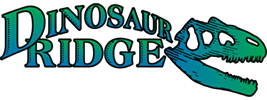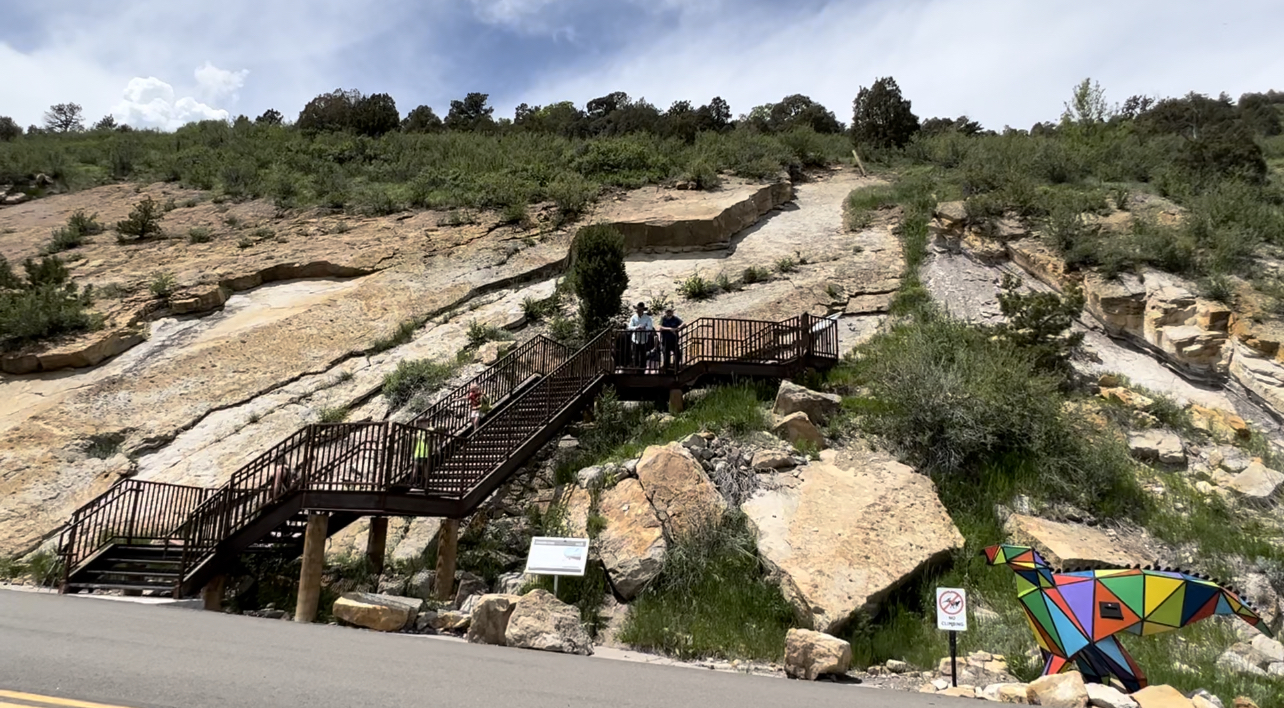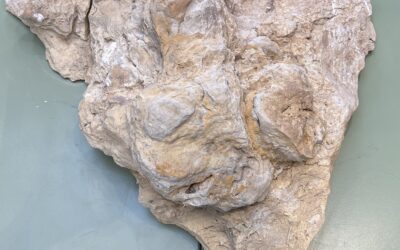[MORRISON, CO, June 4, 2023] – The landlocked state known for its towering Rocky Mountains and sprawling plains once featured dramatically different landscapes as seen in its geological formations. One of the more astonishing prehistoric Colorado sites is in Morrison on Dinosaur Ridge.
The section of hogback on Jefferson County Open Space land is where an ancient creek bed preserved in sandstone has been dubbed Crocodile Creek. Visitors can explore the site from a newly installed stairway and viewing platform, and from a paved roadway with interpretive signs written by paleontologists.
Crocodile Creek provides a particularly good example of sea level croc habitat in a now sloping dry tidal creek bed that has uplifted to a 6,000-foot elevation. More than 90 million years ago, fresh water flowed through this bed into what was then the coastline of a large interior seaway. Today’s stone layers have an abundance of fossilized animal tracks including numerous parallel claw marks.
“Crocodile tracks are one of the most common tracks in the Dinosaur Ridge area, and in the Cretaceous-age Dakota Sandstone generally,” said Dr. Martin Lockley, co-founder of the nonprofit Friends of Dinosaur Ridge, and world-renowned ichnologist and professor emeritus at University of Colorado Denver.
“Crocs had four toes on their hind feet, but often we see only the traces of the three longest toes,” Dr. Lockley noted. “Often swim tracks are aligned in one direction because crocs were following a creek or moving with a current.” The world’s first fossilized crocodile tracks ever scientifically named were found near Golden, Colorado in the 1930s.
Today crocodiles can only be found in south Florida in the U.S. and are protected as a threatened species. Crocs that once thrived in Colorado were smaller than full-grown crocs living in Florida, which can reach up to 20-feet in length.
“Based to the largest tracks we can infer that the larger animals were 13-16 feet long,” Dr. Lockley said. “Nonetheless, the larger crocs would have been fearsome, top predators in these habitats. Paleontologists think they would have ambushed unsuspecting dinosaurs, birds, and other creatures that strayed too close to the waterline.”
Just south of Croc Creek visitors can see evidence of a dinosaur lek where mating rituals, like some modern birds perform, left theropod scrape marks in Cretaceous mud.




